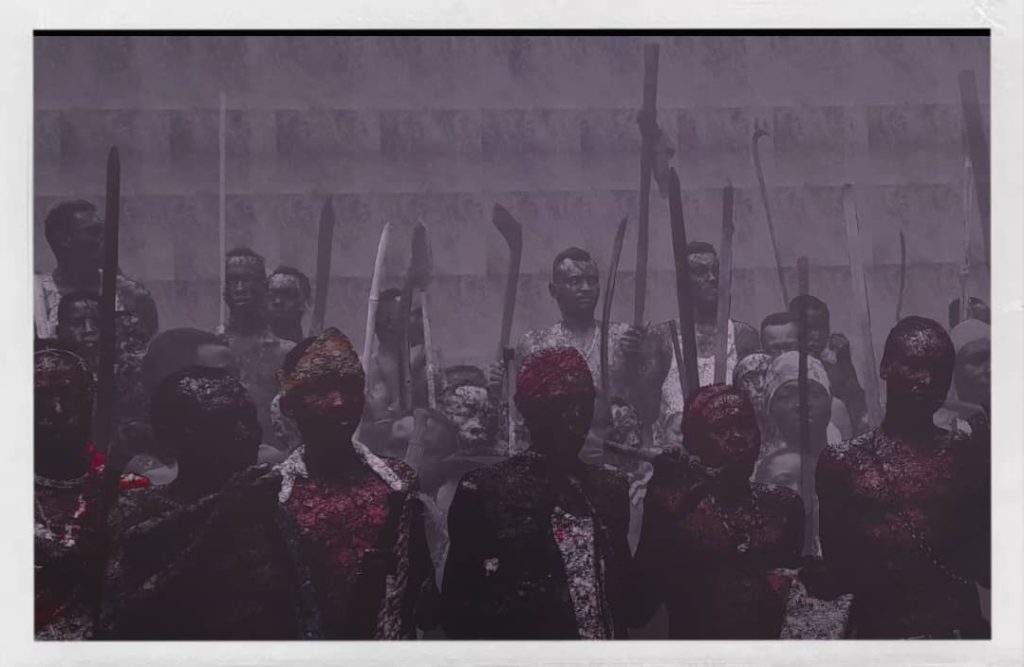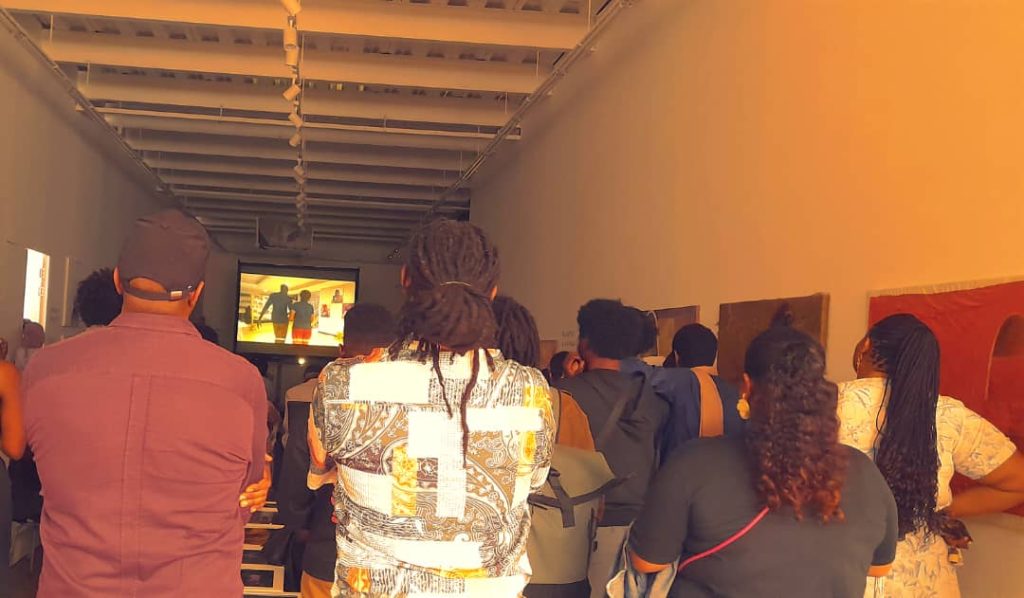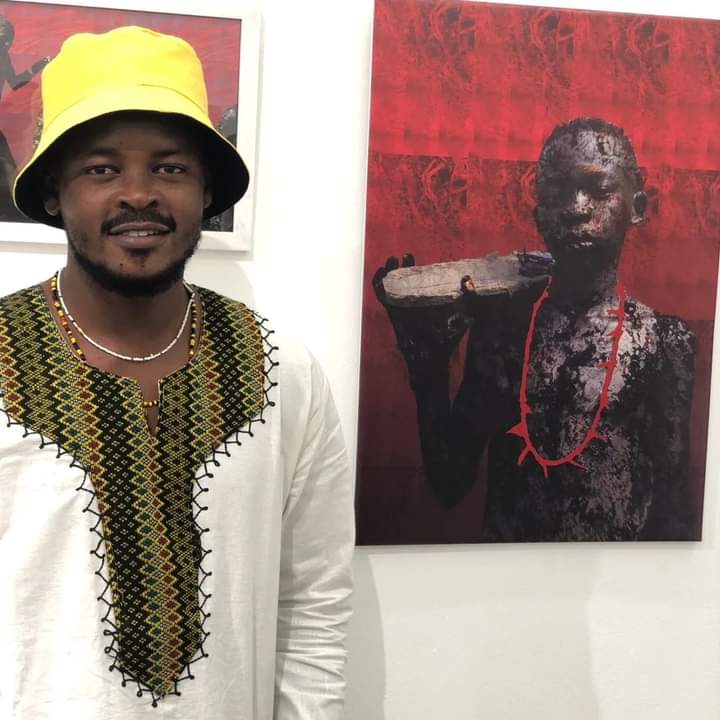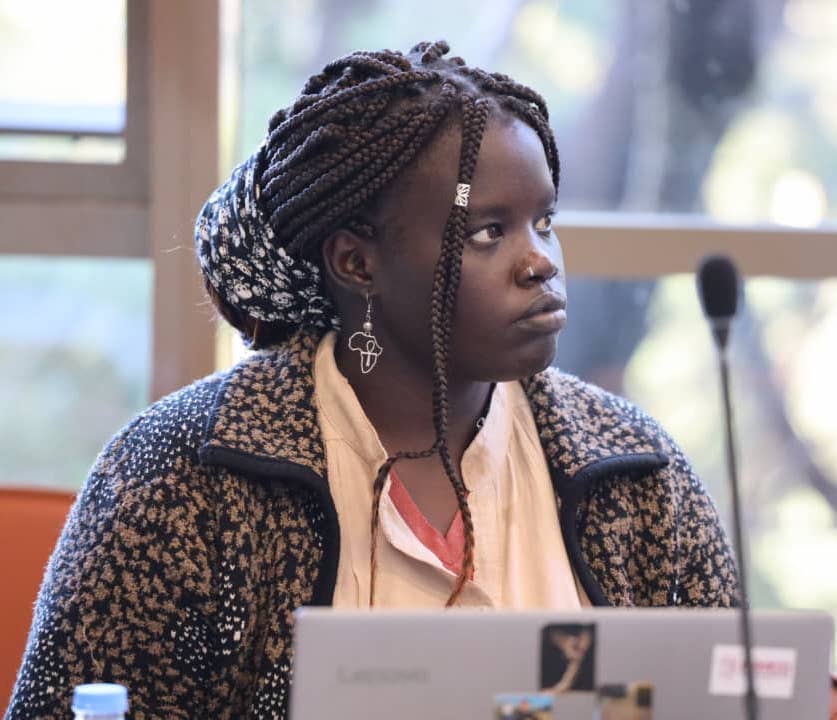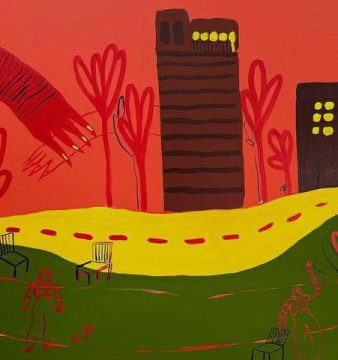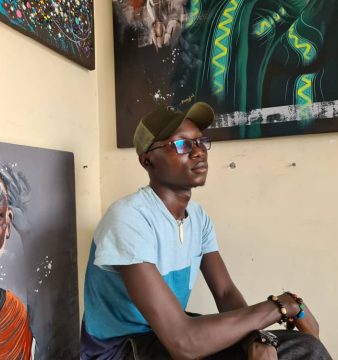The Realities of War Through the Eyes of Sudanese Artists
In the heart of Nairobi, Sudanese artists have transformed their pain, hope and memories into extraordinary pieces of art, painting their feelings and depicting the lives of people who are now displaced and seeking refuge in neighbouring countries.
The Res(e)t project, which began in October 2023, was a response to the movement and relocation of artists to Kenya when fighting began in Sudan on 15 April 2023 between the Rapid Support Forces (RSF), led by General Mohamed Hamdan Dagalo (Hemedti), and the Sudanese Armed Forces (SAF) under General Abdel Fattah Al Burhan. The artists who were staying in Kenya felt the need to establish such a project to bring people together, as there were so many artists moving to Nairobi, specifically those from the cultural sector. The project, which targets 21 artists from different art fields, aims to make the transition period easier and allows these artists to network with people working in the cultural sector in Nairobi, enabling them to resume producing art and continue their activism concerning Sudan.
‘In February, we received funding from USAID, which allowed us to start something we call an artistic production grant. This basically involves giving artists stipends and asking them to produce an artistic project based on a theme,’ said Abdalrheem Faisal Shadad, the curator of the Res(e)t project and a cultural manager.
Shadad is a 28-year-old art curator who used to manage Tthe Downtown Gallery in Khartoum, Sudan before the war began conflicts. He left Sudan in March, just weeks before the war began. He was stuck in Egypt with his family for a while before deciding to relocate to Nairobi, where he continues to work and pursue his aspirations. According to Shadad, Nairobi is a rapidly growing city and is becoming a cultural hub in many ways, where Sudanese artists can truly prosper if they are given the same opportunities as their Kenyan counterparts.
The Res(e)t project focused on four themes. The first theme addressed the documentation of the war itself. The second theme explored relocation and exile from one’s country. The third theme examined the causes of the war, and the fourth theme considered what comes after the war and what needs to be done.
As part of the Res(e)t project, the Rest Residency festival, titled Res(e)t, was officially inaugurated on 31 July 2024. During its first four days, it featured film screenings where four Sudanese short films were presented: Is it War, Out of Service, Aflam Sudan Fest (a documentary), and Voices of the Birds.
‘I believe the project added a lot to my experience. It enabled me to produce a film in Nairobi on a very low budget. My colleagues helped me greatly in this, and I am grateful to them. This was my first short drama film, which I wrote and directed. In all my previous films, I participated only as a director or writer,’ said the director of Out of Service, Rawiya Al Haj.
As part of the Res(e)t project, the Res(e)t exhibition, which concluded on 23 August 2024, not only reflects memories, but also shows Sudan before the war how people used to live in peace and harmony, with spontaneous family gatherings, social cohesion, women gathering for tea and coffee, grandmothers cooking local dishes, and other images that evoke nostalgia and remind one of Sudan before the chaos.
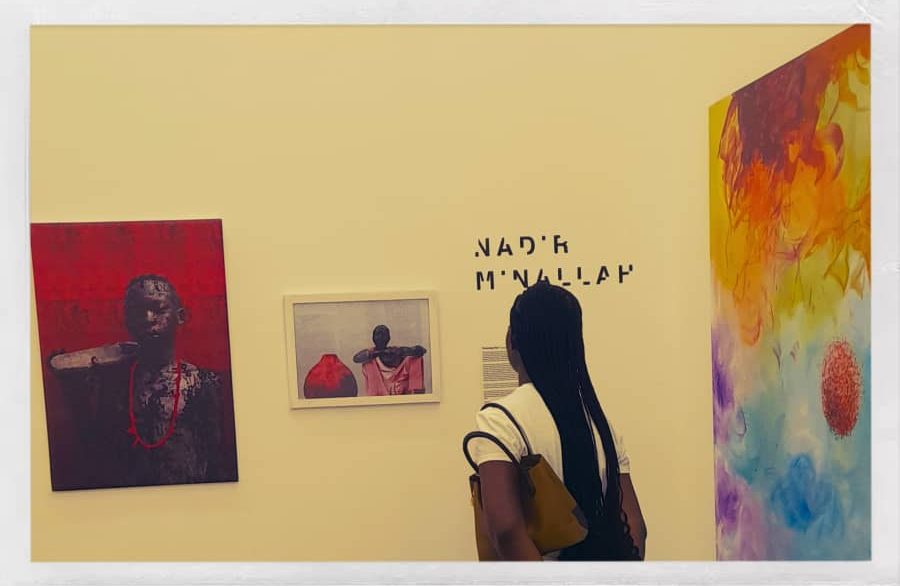
One of the visitors of the exhibition, Ruth Kemirembe, shared her thoughts on the hidden truth behind the artworks. ‘When you hear about war in the news, you usually feel empathetic because you know it’s people who are dying, suffering, or getting injured. But it’s just a figure, like they’re just reporting numbers – 1,000 people, maybe 200 – and it kind of dehumanises the people. You think it’s just a group of people somewhere that got hurt, which is bad, but you don’t fully empathise with them. When you look at this exhibition, it puts faces to those numbers—they’re not just statistics; they were actual people with lives before the war,’ she explained.
A 31-year-old photographer, Nader Minallah, who came from Damazin in Blue Nile State in February 2024, has become a part of the exhibition and the artistic residency project. He is participating with several photos. His project’s concept is based on Jada Al Nar, a cultural practice tradition in the Blue Nile. In his work, Minallah tries to blend two conceptual ideas: Jada Al Nar, as a cultural practice that promotes peaceful coexistence among the people in the Blue Nile State; and the darker side of Jada Al Nar, meaning ‘throwing people into the fire’, which is exploited by politicians and war generals who drag youth and civil society activists into becoming part of the militias or armies in Sudan, leading them into a war in which they have no stake.
‘The central point in my artistic work is that in wars, victims are often seen as numbers, and sometimes there are victims who aren’t even counted—they just turn to ashes. That’s why in part of my artwork, I put ashes on the faces of the figures to symbolise how, in the end, they are not counted or looked at, but merely turn into ashes. Most of the artworks in this exhibition speak to that: not viewing victims and disasters as just numbers, but recognising that these victims had lives and memories before the war,’ said Minallah.
War in Sudan is not something new, as the country has witnessed several conflicts since its independence in 1956. From the south to the east, and from the east to the west, a series of conflicts took place as the previous regime government of former Sudanese President Omar Al Bashir fought against rebel militias in these regions. Al Bashir’s regime was one of the most rigid and unjust in Sudan’s history. In 2019, Sudanese youth were able to overthrow the Al Bashir regime through a peaceful revolution. Since then, Sudanese artists have had more space to practise their powerful art more freely than before.
Since 2021, there were at least 160,000 refugees from Sudan, South Sudan, Somalia, the Democratic Republic of the Congo (DRC), Ethiopia, Uganda and Burundi in Kakuma Camp alone. It is estimated that over the past three decades, Kenya has hosted more than 750,000 refugees, with upward of 100,000 residing in urban areas. Although there are no official numbers, the number of refugees from Sudan have increased since the war began. Thousands of Sudanese continue to flee the war in their country every day, with many making the long trek south to Kenya.
Dominica Amet Joseph Marco is a 26-year-old South Sudanese writer, freelance journalist and feminist/social activist who graduated from the faculty of law from the University of Bahri in 2018. She is one of many who had to flee war in Sudan to finally come and live in her homeland South Sudan. She has written and published articles, stories and poems since 2017. She has worked with and published articles in Aka’bar Alwatan Newspaper in Sudan, Almugif Newspaper in South Sudan, and several other Arabic websites.


